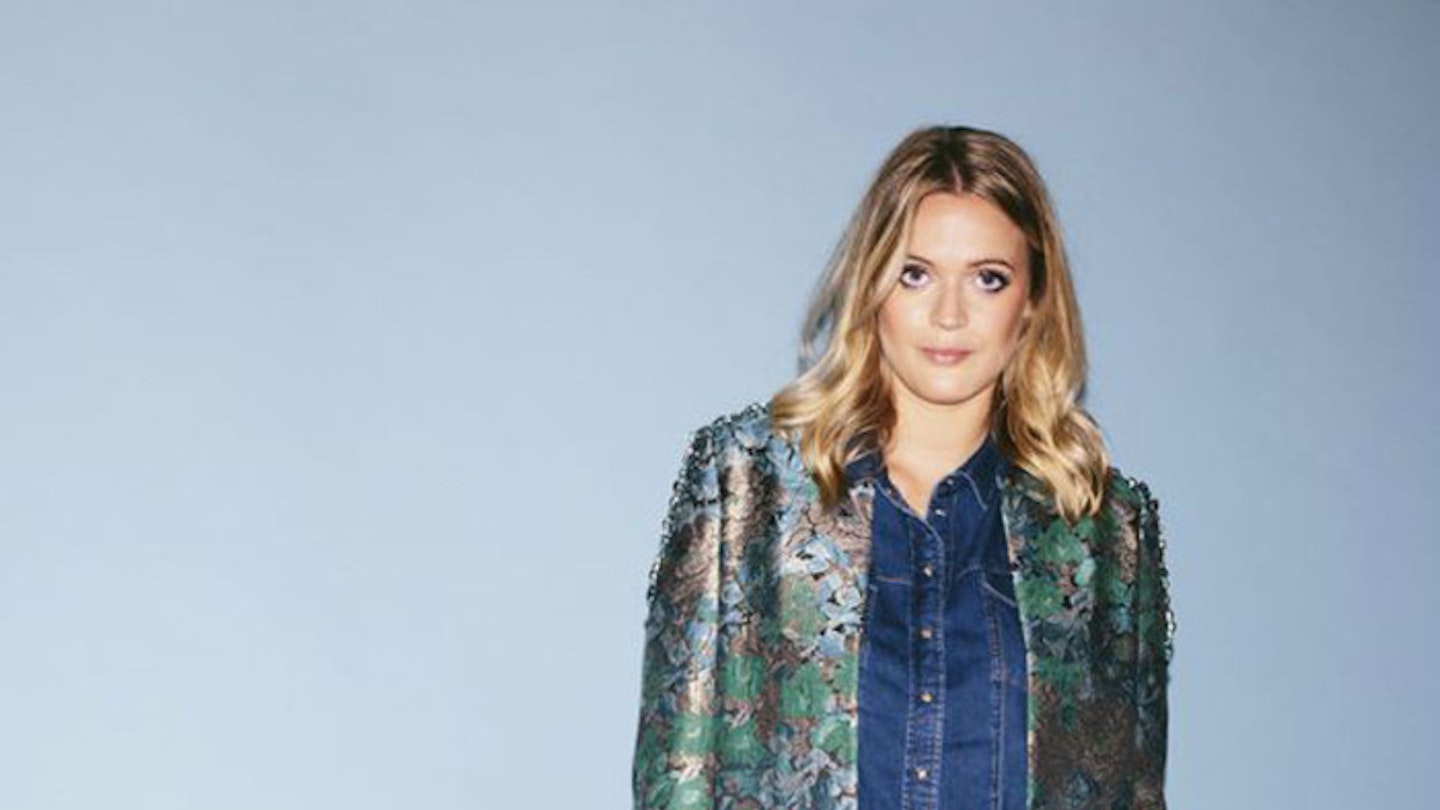In the age of giant online friendships, writer Dolly Alderton (right) took drastic action
My phone rang. It was her – the acquaintance who was making my life a misery. ‘Pick up and tell her the truth,’ my best friend Farly said. ‘This can’t go on, it’s ridiculous.’ The truth was this: we were not friends. We’d met through work a few years before and got on-ish. We swapped numbers and half-heartedly wrote ‘drinks soon? xx’ every few months under each other’s Instagram posts. But then suddenly she’d put on a work event she needed filling out with people, or she’d get wind of a party I was having and then – well then she’d decide we were best friends.
I answered the call. ‘Hi you!’ she squawked. ‘So. Three more days! What’s the plan?’
‘Hello!’ I said. ‘There is no plan.’
‘Why not? It’s your birthday, there must be a plan!’
‘Because well...’ Farly’s eyes widened and she made a coaxing motion with her hand. ‘I am doing something small, only with close friends. And we’re not really close friends.’
I couldn’t believe the words had escaped my mouth. There was silence on the other end of the phone. ‘OK,’ she said, icily. ‘Goodbye.’
That was nearly a year ago – the beginning of my friend-cull odyssey.
And I’ve never felt better. Somewhere along the line, I think we’ve become a little promiscuous with our friendships. Social media is partly to blame, allowing us to believe that we are bonded to masses of people simply because they’ve tweeted about what type of mattress they just bought or Facebooked how they (claimed) to vote in the general election. I think we need to go back to basics and redefine what ‘friend’ means. Think about how many Facebook friends you have – mine currently stands at 1,026 – the same population as the capital city of Bermuda. This is, quite frankly, ridiculous. And Jean Smith, a social anthropologist, tells me it’s also impossible. ‘That follows a larger trend in society about quantity over quality and it’s about short-term fixes. But it’s a false illusion,’ she explains. ‘Once you get past 150 in your tribe, you can’t really look after everyone.’ This comes from Dunbar’s Number – a suggested limit of the number of friendships humans can sustain. One hundred and fifty is the average circle of casual friends, 50 close friends, 15 you can confide in, then an intimate circle of five closest friends. This circle, Jean tells me, is the most important. ‘They’re the ones who make up your happiness and your world.’
‘Once you get past 150 in your tribe, you can’t really look after everyone.’
My natural inclination towards cowardly people-pleasing made me a prime target for fake befrienders. I always seemed to be scheduling coffees with people I didn’t know or being coerced into nights out I didn’t want to go on. People tend to use the word ‘friend’ to climb their way up the ladder at work – using passing acquaintances as leverage. And I used to be an intrepid social climber myself. I shoehorned new acquaintances into friend-shaped holes in my early twenties a lot, friend-shopping on nights out and angling for party invites from people I barely knew. I used to see my social life as a stock market and new friends as exciting acquisitions with varying share prices depending on the social leverage they gave me. On one particularly desperate occasion, I remember being in a group that was following around a minor TV presenter I’d met through a friend of a friend, from club to club, at one point actually walking after her into a corner shop at 3am while she bought crisps. At no point did I ask myself: why am I here? What will I gain from this? Why am I pretending this person is my friend?
It soon became exhausting. And as I got older I realised the high of being able to wave at dozens of people at a party feels like a hollow second best to the fulfilling experience of true, boring, through-thick- and-thin, long-lasting relationships. And it’s not real. Recently, my friend Lauren wrote and directed a short film and for the final shoot day, I sent an email out to 150 friends begging them to help us out and be extras for a few hours one Sunday. Out of all those people, exactly five turned up.
Recently, I saw my (very popular) friend Beth and we got onto the subject of how difficult it is to divide real friends from social climbers. Beth admitted, ‘I made a colour-coded spreadsheet of all my friends and how often I saw them. My closest friends were green, second closest were magenta and close acquaintances were orange. Only when I put it on paper did I realise how I was misspending my time.’
‘What am I?’ I asked nervously.
‘You’re magenta, darling,’ she replied.
I think she’s on to something. You have to set some boundaries, otherwise it’s all too easy to fill your life with a false sense of companionship. So now, this is my test:
-
Will you come and be an extra in my weird short film on a rainy Sunday?
-
Do you like drinking endless cups of tea with me in my damp kitchen?
-
Do you like me when things go wrong? No drinks, no outrageous stories, no juicy gossip. Just me – looking like Jackie Stallone, puffed up from crying, curled up on a sofa?
If the answer to all of the above is yes, then we’re probably friends. If not, I’m not your friend. It’s pretty great, how much fuller life feels when you’re brave enough to empty it.
